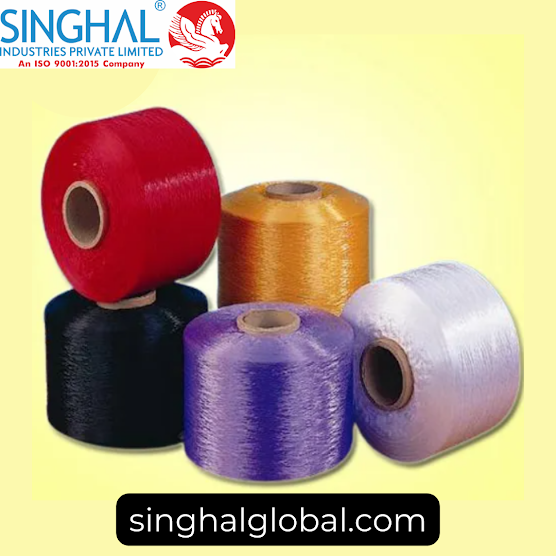PP (polypropylene) multifilament yarn is a versatile textile material renowned for its strength, durability, and versatility. In this article, we delve into the world of PP multifilament yarn, exploring its uses, manufacturing process, and the leading manufacturers in the industry.
Understanding PP Multifilament Yarn
Durable and Flexible
PP multifilament yarn is composed of multiple filaments spun together to form a single yarn. These filaments are extruded from polypropylene resin, a thermoplastic polymer known for its excellent mechanical properties and chemical resistance. PP monofilament yarn exhibits high tensile strength, abrasion resistance, and flexibility, making it suitable for various applications across different industries.
Manufacturing Process
The manufacturing process of PP multifilament yarn involves extruding molten polypropylene resin through spinnerets to form continuous filaments. These filaments are then cooled, stretched, and wound onto bobbins to create multifilament yarns of desired deniers and filament counts. The yarns may undergo additional processing steps such as texturing, twisting, or dyeing to enhance their performance and appearance for specific applications.
Applications of PP Multifilament Yarn
Textiles and Apparel
PP multifilament manufacturers is widely used in the textile and apparel industry for manufacturing a variety of products such as fabrics, ropes, cords, webbings, and sewing threads. The yarn's inherent strength, lightweight, and colorfastness make it ideal for applications requiring durable and high-performance materials, including sportswear, outdoor gear, upholstery, and technical textiles.
Industrial and Technical Applications
In addition to textiles, PP multifilament yarn finds applications in various industrial and technical sectors, including automotive, agriculture, construction, and geotextiles. The yarn is used for reinforcing composites, manufacturing industrial fabrics, sewing bags and sacks, weaving nets and meshes, and producing ropes and twines for diverse applications such as automotive interiors, agricultural nets, construction membranes, and erosion control mats.
Benefits of PP Multifilament Yarn
Strength and Durability
PP multifilament yarn offers exceptional strength and durability, making it a preferred choice for applications requiring robust and long-lasting materials. The yarn's resistance to moisture, chemicals, UV radiation, and abrasion ensures optimal performance and reliability in challenging environments, contributing to product longevity and cost-effectiveness.
Versatility and Customization
One of the key benefits of PP multifilament yarn is its versatility and customization options, allowing manufacturers to tailor yarn specifications such as denier, filament count, tenacity, and color to meet specific customer requirements. Whether for standard or specialized applications, PP multifilament yarn offers flexibility and adaptability to diverse manufacturing processes and end-use applications.
Conclusion
In conclusion, PP multifilament yarn is a versatile and indispensable material with a wide range of applications across various industries. Whether for textiles, apparel, industrial fabrics, or technical textiles, PP multifilament yarn offers unmatched strength, durability, and customization options, making it an essential component in manufacturing high-quality and innovative products.
Frequently Asked Questions (FAQs)
Q: What are the main uses of PP multifilament yarn?
PP multifilament yarn is used in various industries for manufacturing textiles, ropes, cords, webbings, sewing threads, industrial fabrics, nets, meshes, and ropes. Its strength, durability, and versatility make it suitable for applications such as apparel, technical textiles, automotive components, agricultural nets, construction membranes, and geotextiles.
Q: What are the advantages of polypropylene multifilament yarn?
Polypropylene multifilament yarn offers several advantages, including high tensile strength, abrasion resistance, chemical resistance, UV stability, and lightweight. These properties make it suitable for applications requiring durable and reliable materials in industries such as textiles, automotive, agriculture, construction, and geotextiles.
Q: How is PP multifilament yarn manufactured?
PP multifilament yarn is manufactured through a process of extruding molten polypropylene resin through spinnerets to form continuous filaments. These filaments are then cooled, stretched, and wound onto bobbins to create multifilament yarns of desired deniers and filament counts. Additional processing steps such as texturing, twisting, or dyeing may be applied to enhance yarn performance and appearance.
Q: Where can I find PP multifilament yarn manufacturers?
PP multifilament yarn manufacturers can be found through online directories, industry associations, trade shows, and business-to-business platforms specializing in textile materials and supplies. These manufacturers offer a wide range of PP multifilament yarn products, customizable options, and technical support to meet customer needs and specifications.

Comments
Post a Comment